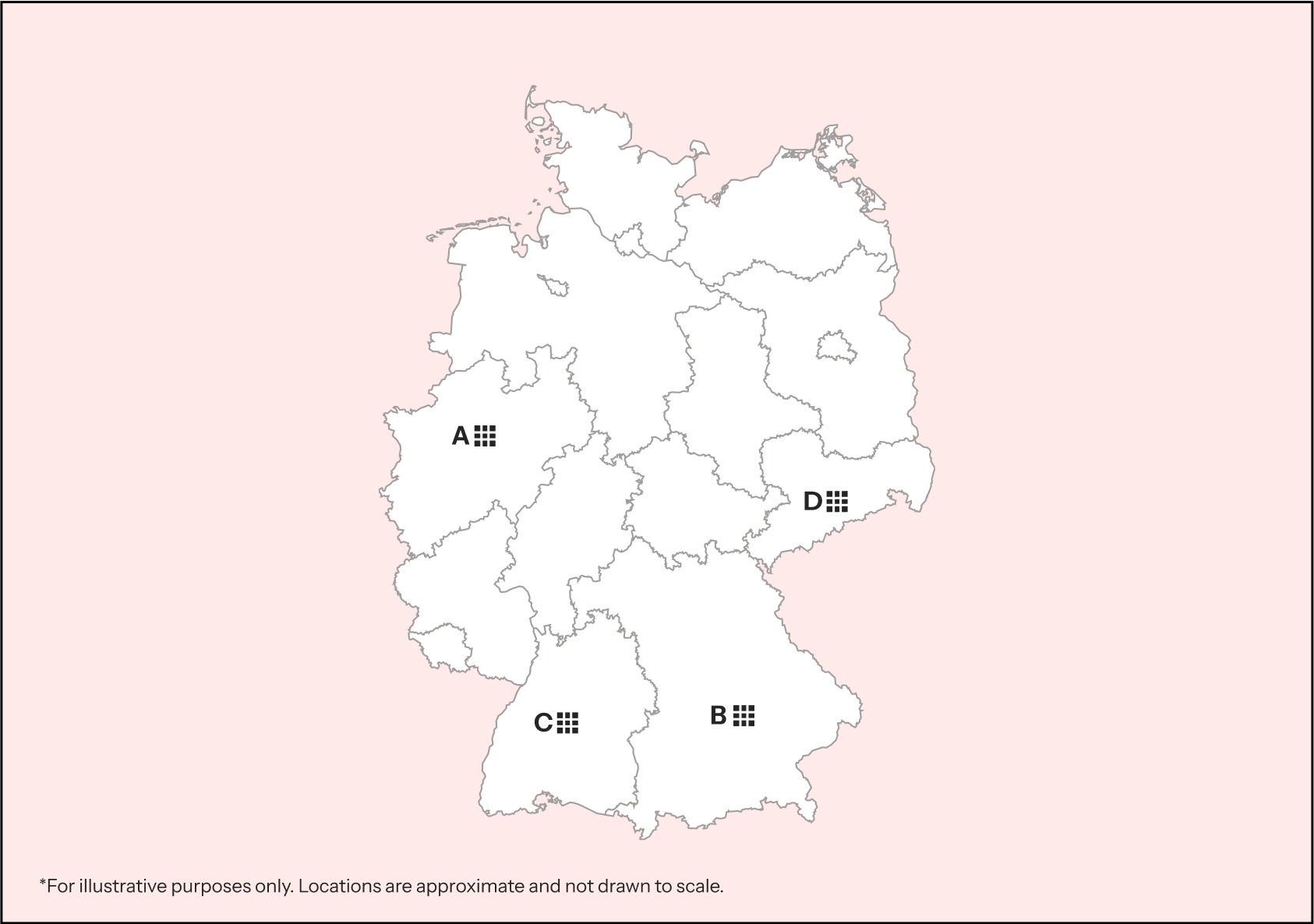Germany
download summary
Country Overview
No items found.
*All data is in tonnes per annum
TEXTILE WASTE*
2,116,000
Post consumer textile waste
1,036,840
Cotton
42.17%
Polyester
10.70%
Poly cotton
12.46%
Acrylic
4.79%
Viscose
4.31%
Wool
1.76%
Polyamide
1.28%
Other blends
19.33%
Other pure materials
0.80%
Unknown
2.40%
pre consumer textile waste
Post Industrial textile waste
Cotton
Polyester
Poly cotton
Acrylic
Viscose
Wool
Polyamide
Other blends
Other pure materials
Unknown
Imported textile waste
Cotton
Polyester
Poly cotton
Acrylic
Viscose
Wool
Polyamide
Other blends
Other pure materials
Unknown
*This data is collectively from Germany, UK, Netherlands, Poland, Spain, & Belgium.
KEY POINTS ON Textiles & Apparels LANDSCAPE
€38.94B
Apparel Import
€25.9B
Apparel Export
€19.5 Bn
Intra-EU Apparel Trade
Germany is the EU’s largest apparel importer, sourcing 49.9% from within the EU and 50.6% from outside. Imports from European countries such as Poland and the Netherlands are on the rise. At the same time, Germany is also the EU’s largest apparel exporter, dominating intra-EU trade. Major apparel exporters to Germany are Poland (12.7%), China (12.3%), Bangladesh (11.6%), the Netherlands (9%), Turkey (8.1%), and Italy (5.6%)
45%
Germany’s Textile Production Value Comes from Technical Textiles
Germany’s T&A industry is highly import-dependent for raw materials, with cotton largely sourced from India and the U.S. While raw materials are sourced from abroad, Germany’s strength lies in value-added processing, technical textiles, and innovative fibres.
490
Fashion Companies
910
Textile Companies
Germany is Europe’s largest producer of technical textiles, supplying specialized fabrics for sectors like automotive, aerospace, and healthcare, supported by a strong focus on research and innovation. At the same time, Germany and other Western EU countries concentrate on producing high-end, capital-intensive apparel, while medium-priced, mass-market CMT (Cut-Make-Trim) manufacturing is largely outsourced to lower-cost Eastern European
69,335 tonnes
Directed to Energy Recovery
Within the EU, Germany directs the largest volume of textile waste to energy recovery. The country’s sorting capacity falls significantly short of the levels of separate collection, resulting in the majority of used textiles being exported to the Netherlands and Poland for further sorting and processing. Of the textiles that are sorted domestically, only 12% can be sold through the second-hand market, highlighting the limited reuse potential within Germany itself.
waste cost
waste Type
composition
price
notes
Post-Consumer
Cotton / Wool / Acrylic
€0.02–0.14 / kg
Feedstock for fibre-to-fibre recycling
- All the textiles collected through bring banks is deemed as waste irrespective of the quality or intention of the person dropping it
production clusters
Key regions with fibre production
Textile clusters - North Rhine-Westphalia(A), Bavaria(B), Baden-Württemberg(C), Saxony(D)

Key regions with apparel production
Hamburg (A), Baden-Württemberg (B) , Bavaria (C), Berlin (D)

- Labour’s share in apparel production cost within Western EU has declined, indicating a shift toward automation and technology-intensive production.
- German apparel manufacturing is spread across small towns and cities, and faces economic stagnation, declining orders and workforce shortages,
- Germany introduced the world’s first government-backed sustainable textile label, the Green Button, and by July 2023, over 60 certified companies had adopted it, demonstrating improved social conditions, better labour practices, and stronger environmental sustainability across their operations.
Waste regulation
From 2025, the act will require the separate collection of textile waste and textiles for reuse.
It is a comprehensive plan aiming to transform how textiles are designed, produced, consumed, and disposed of across the EU. It includes measures to make textiles durable, repairable, recyclable, and largely made of recycled fibers, while addressing overproduction, microplastic release, and greenwashing. The strategy sets the goal to achieve a sustainable and circular textile sector by 2030, aligned with the European Green Deal and Circular Economy Action Plan.
Strengthens waste management by mandating all EU member states to separately collect textile waste from January 1, 2025 and imposing Extended Producer Responsibility (EPR) schemes requiring producers to finance and organize the entire lifecycle management of their products’ waste. It emphasizes the waste hierarchy prioritizing prevention, preparing for reuse, recycling, recovery, and environmentally sound disposal, with clear definitions on when waste ceases to be waste (end-of-waste criteria)
Effective May 20, 2024, it tightens controls on waste shipments, including textiles, within and outside the EU. It bans most waste exports for disposal after May 21, 2026, requires audits, digital tracking, and enforces stricter penalties. The law supports the circular economy by ensuring environmentally safe waste management.
Effective July 18, 2024, it mandates durability, repairability, recyclability, and increased recycled content for textiles and most products. It requires Digital Product Passports, bans destruction of unsold textiles by large companies, and enforces lifecycle environmental impact reduction. The regulation enables product-specific rules and harmonized penalties, driving a circular economy and sustainable production.
Waste trade
54.92 kT
Import quantities (HS 6309, 631010)
418.52 kT
Export quantities (HS 6309, 631010)
green energy
17.61%
Share of modern renewables in final energy consumption
- Renewable Electricity Generation by source: Wind (61%), Solar (27.7%), Hydro (11%), Geothermal (0.1%)
- The State Aid for Industrial Decarbonization (BIK Scheme) in Germany: It is a €2.2 billion grant program supporting mid-sized and large industrial firms in decarbonizing their production through electrification or switching to renewable hydrogen. Aid is capped at €200 million per beneficiary and is available until December 2025. The scheme targets companies that can achieve at least a 40% reduction in greenhouse gas emissions

